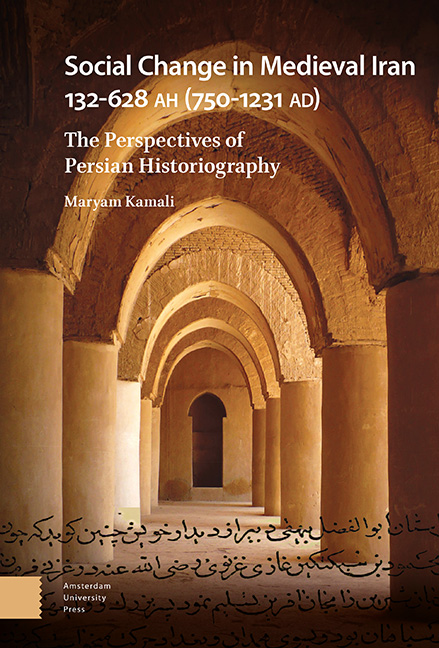Book contents
2 - Establishment of the ʿAbbāsid Caliphate: The Restructuring or Displacement of Agents
Published online by Cambridge University Press: 28 December 2023
Summary
Abstract
The ʿAbbāsid Caliphate was a reproduction of the Umayyad Caliphate, which tried to rule with the same monopolistic power. After using the power of Iranian amirs and dāʿies, the ʿAbbāsids began their efforts to consolidate power by fomenting rivalry between the dāʿies and eliminating them, including Abu Moslem, whose name was associated with Khorāsān and the victory of the ʿAbbāsids. The circle of Iranians’ connection with the ʿAbbāsid power framework continued with the Barmakids’ presence in the caliph's court. The ʿAbbāsids interpreted the presence of the bureaucrats as a division of power and therefore eliminated the Barmakids. However, it provided the ground for Khorāsān's independence in the long run. The Khorāsān riots were the first result of the massacre of the Barmakids.
Keywords: ʿAbbāsids, dāʿies, Abu Moslem, Iranian viziers, Barmakids
The Removal of the Dāʿies
The formation of the ʿAbbāsid Caliphate resulted from the persistent and tireless efforts of the dāʿies, many of whom thought only of ending Umayyad rule and had no clear picture in mind of what should happen afterward. Thus, on the very eve of success, the ʿAbbāsid power saw stubborn rivals who could challenge the power of the newly established caliphate. Yesterday's dāʿies, who had been formed as resources in the Umayyads’ repressive structure and saw the result of their actions favor only the ʿAbbāsid imams, were now gradually becoming serious obstacles to establishing the power of the ʿAbbāsids.
Abu Salama Khallāl and Soleymān ibn Kasir were among these dāiʿes. Many considered Abu Salama and Soleymān to be supporters of ʿAli's family, who had been deceived by the ʿAbbāsids’ secrecy and had accompanied them until the ʿAbbāsids came to power. On the threshold of the revelation of the ʿAbbāsid invitation, Abu Salama consulted with some of Kufa's elders and decided to form a shorā (council) of ʿAli's descendants and ʿAbbāsids so that they could choose someone from themselves to lead the caliphate. But as he was worried about a possible rift between council members, he wrote separate letters to Jaʿfar ibn Sādegh, one of the Shiʿite imams, and ʿAbdollāh ibn Hasan and ʿOmar ibn ʿAli ibn Hosseyn, two ʿAlawite elders, asking them to accept the caliphate. But before the plan came to fruition, Abu Moslem's envoys found the hiding place of Saffāh and swore allegiance to him as the caliph.
- Type
- Chapter
- Information
- Social Change in Medieval Iran 132-628 AH (750-1231 AD)The Perspectives of Persian Historiography, pp. 63 - 80Publisher: Amsterdam University PressPrint publication year: 2023



